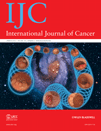Experience with high-risk human papillomavirus testing on vaginal brush-based self-samples of non-attendees of the cervical screening program†
Conflict of interest statement: C.J.L.M.M., P.J.F.S. and D.A.M.H. are shareholders of self-screen, a recent spin-off company of VUmc medical center. C.J.L.M.M. is on the scientific advisory board of Qiagen, the manufacturer of the Hybrid Capture-2® HPV test. All other authors declare that they have no conflict of interest. The sources of funding did not have any influence on the design and the analysis of the results.
Abstract
We evaluated the effect of offering brush-based vaginal self-sampling for high-risk human papillomavirus (hrHPV) testing to non-attendees of the cervical screening program on response rate, compliance to follow-up and cervical intraepithelial neoplasia grade 2 or 3 (CIN2+/CIN3+) yield. In addition, concordance of hrHPV test results between physician-taken cervical scrapes and vaginal self-samples was determined. A total of 26,409 nonattending women were randomly assigned to receive a vaginal brush device for hrHPV testing by Hybrid Capture-2® method (i.e., self-sampling group, n = 26,145) or a reinvitation for regular cytology-based screening (i.e., recall control group, n = 264). hrHPV-positive self-sampling responders were invited for a physician-taken scrape for cytology and blinded hrHPV testing. If cytology was abnormal, women were referred for colposcopy. Response rate in the self-sampling group was significantly increased compared to the recall control group (30.8% versus 6.5%; p < 0.001). The concordance rate between hrHPV detection in self-samples and corresponding physician-taken cervical scrape samples was 68.8%. Amongst women with CIN3+ and CIN2+, the concordance rates in hrHPV positivity between both samples were 95.5% and 93.8%, respectively. Adherence at baseline to cytology triage of hrHPV-positive self-sampling women (89.1%) and colposcopy referral of those with abnormal cytology (95.8%) was high. The CIN2+/CIN3+/carcinoma yields were 1.5%, 1.0% and 0.1%, respectively, in self-sampling responders. In conclusion, offering hrHPV testing on self-sampled vaginal material with a brush device to non-attendees significantly increases the attendance to the regular screening program, yields hrHPV test results that are in very good concordance with those of physician-taken scrapes in women with CIN2+/CIN3+, and is effective in detecting CIN2+/CIN3+.




